Influence of Caste in Clothing Through the Ages
In March 2022, a scheduled caste man was killed for sporting a moustache. Scheduled caste men getting lynched and murdered for sporting a moustache is a recurring inhumane crime in Indian society. People belonging to Scheduled castes are assaulted for wearing sunglasses, scalped with a knife for wearing a turban, targeted for wearing “upper-caste” shoes… Historically, caste oppression found an expression through sartorial superiority. The savarna supremacy is threatened when the outcastes dress on par with twice-born castes. From wearing caste-specific wristbands in schools to caste-based mangalsutras and poonool/janeu in workplaces, clothing is a fundamental medium of caste identity and oppression in Indian society.
The influence of the caste system on clothing and appearance can be traced back to several millenniums. Dharmasutras dating to the 1st millennium BCE document some of the earliest examples of varna and jati specific clothing. According to Manusmriti, the Chandala shall live outside the village; wear garments of the dead, and ornaments of black iron.
The clothes of dead bodies shall be their (Chandalas’) dress; they shall eat in broken dishes; their ornaments shall be of iron, and they shall be constantly wandering.
– Manusmriti 10.52
As guidelines for Upanayana, Dharmasutras state that the skins of black antelopes, spotted deer, and he-goats shall be worn by Brahmin, Kshatriya, & Vaisya respectively for covering the upper body. The janeu worn over shoulders should be made of cotton for the Brahmin, hemp for Kshatriya, and wool for Vaisya.
For the Kṣatriya, dyed in Mañjiṣṭhā; for the Vaiśya, dyed in Haridrā; for the Brāhmaṇa, the skin of the white or black deer; for the Kṣatriya, the skin of the spotted deer; for the Vaiśya, the skin of the goat; the sheep-skin for all castes; as also the woollen cloth; if the student is desirous of Brāhmic glory, he should wear the skins alone; if desirous of Kṣattric glory, he should wear the cloths alone; if desirous of both kinds of glory, he should wear both.
– Āpastamba-Dharmasūtra, 1.3.1-9
In Chozha sculptures dating to the early medieval era, Shaivite Nayanmars of Brahmin castes like Sambandhar, Sundharar, and Manikkavasagar are depicted wearing the janeu/poonool – a marker of varna which is absent among sculptures of non-Brahmin Nayanmar saints like Kannappar of Vyadha (hunter) caste or Appar (Thirunavukkarasar) of Vellalar community.
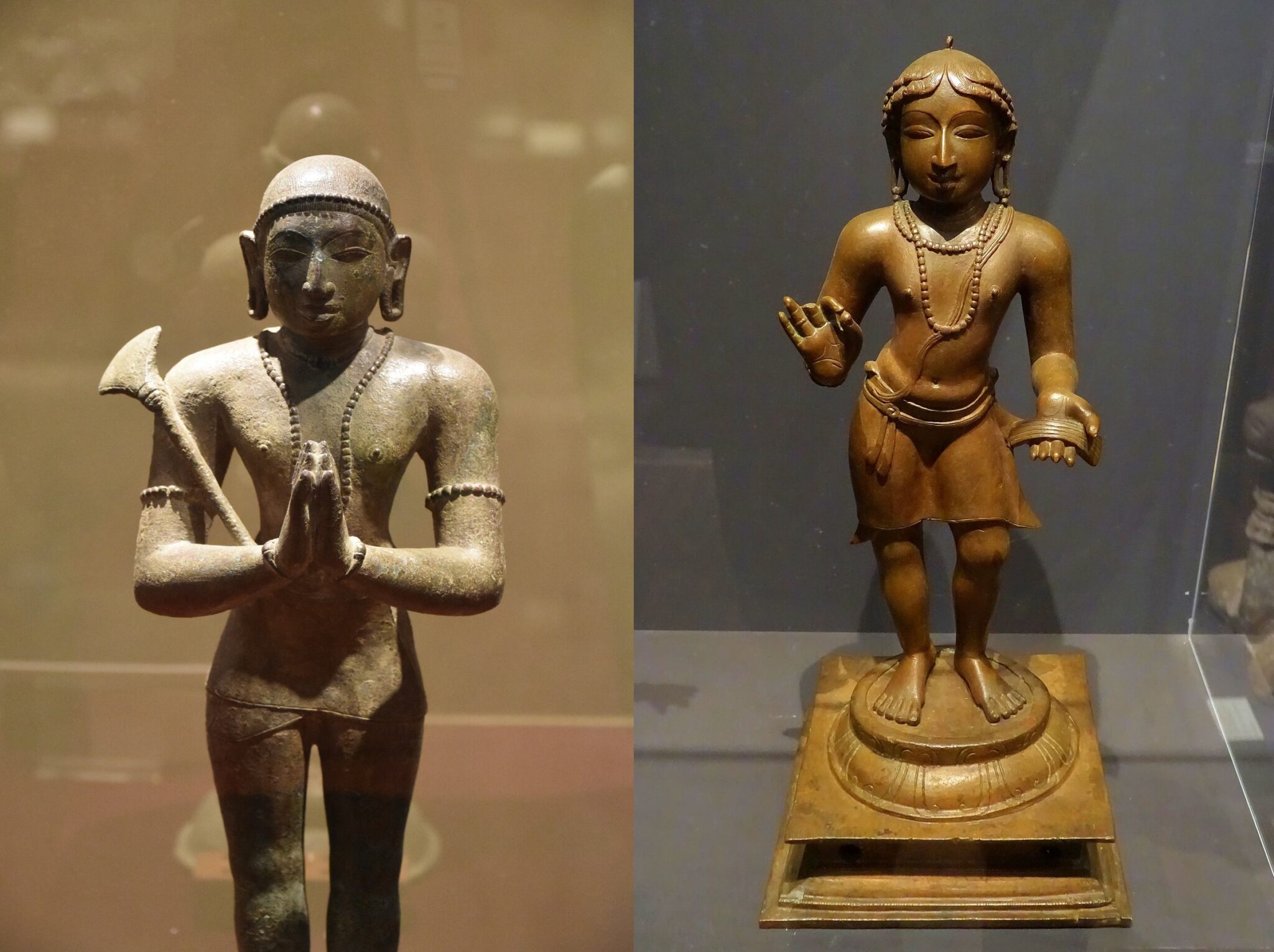
12th Century Chozha bronze depicting Manikkavasagar (right) with caste-marker thread & Appar (left) without one.
However, saint Nandhanar, a Pulayar (an untouchable caste), is depicted wearing the poonool/janeu in visual arts. Thiruthondar Thogai, an 8th-century compilation listing Saiva sect Nayanars, makes a one-line reference to Nandhanar (also known as Thirunaalaippovar,) as one of the Nayanars who was longing to enter the temple. 11th-century Thamizh Saivite text Thiruthondar Thiruvanthathi states that Thirunaalaippovar was a Pulayar, an outcaste by birth, who sought access to the Shivaloganathar temple in Thiruppungur and the Nataraja temple in Chidambaram. The Periya Puranam (12th century CE), composed several centuries after the time of Nandhanar appropriates the protest of Nandhanar by adding that he gains access to temple worship only after his caste-oppressed Pulaya body is ‘purified’ by the sacrificial fire, and he reappeared like a Brahmin sage from the fire, wearing matted hair and poonool across his chest. The Periya Puranam account of Nandhanar reinforces the supremacy of wearing poonool/janeu while leaving the ban of Pulayars in the temple unchallenged. Dr BR Ambedkar dedicated his book The Untouchables (1948), to three Dalit saints, including Nandhanar.
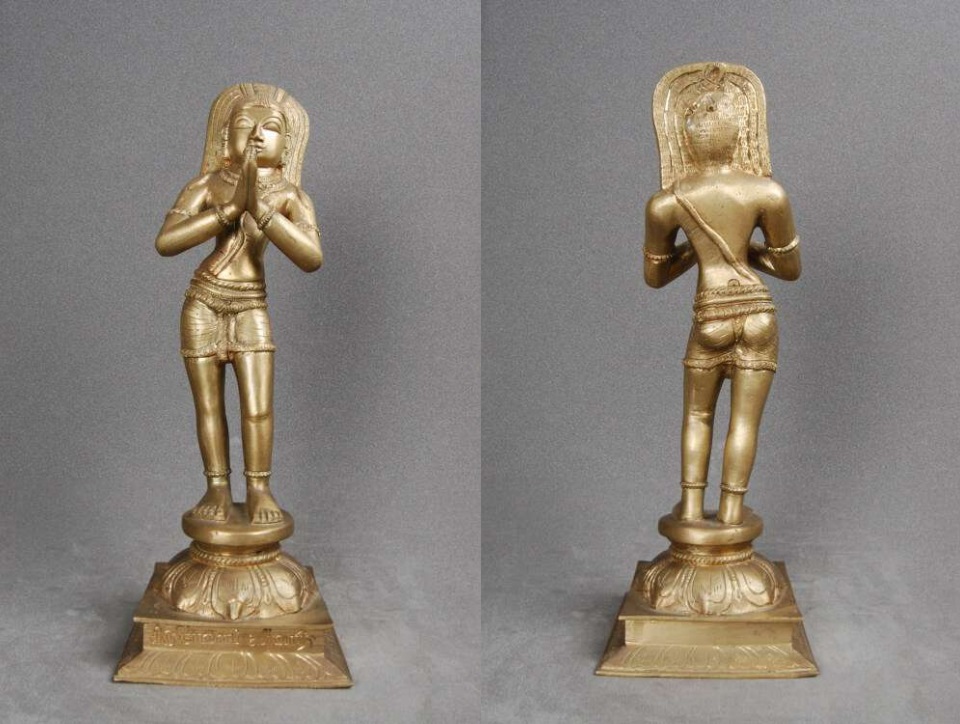
Nandhanar Nayanmar – a Pulayar appropriated by Brahmin priesthood with poonool and matted hair | Image: British Museum
Guru Nanak (1469-1539), the founder of Sikhism refused to wear the janeu citing it was discriminatory towards castes lower in the varna hierarchy, denounced the varna system, and preached equality regardless of caste or gender. In the modern era, the poonool is worn by some Shudra castes and astrologers of certain Dalit communities too – this trickledown trend aping the lifestyle of dominant castes arise from the ambition to move up the caste ladder and only reaffirms the prevalent ritualistic authority of the janeu.
By the medieval period, the number of sub-castes multiplied and clothing developed a complex relationship with caste. Nairs dressed differently from Namboothiri Brahmins. Queen of Travancore dressed differently from Maharani from Rajputana. Peshwa rulers dressed differently from Marathas. Ashrafs dressed differently from Muslims who were local converts. People of oppressed castes dressed scantily for centuries, while the oppressors were often chiefly bejewelled. Thanda Pulayans were a sub-caste of Pulayans who lived in South Malabar and Cochin. Their name is derived from the lower garment worn by the females, which was made of the leaves of sedge, called Thanda. Thanda leaves are woven and tied around the waist to hang down below the knees. Married Thanda Pulayan women wore a thaali (mangalsutra) made of a piece of a conch shell.
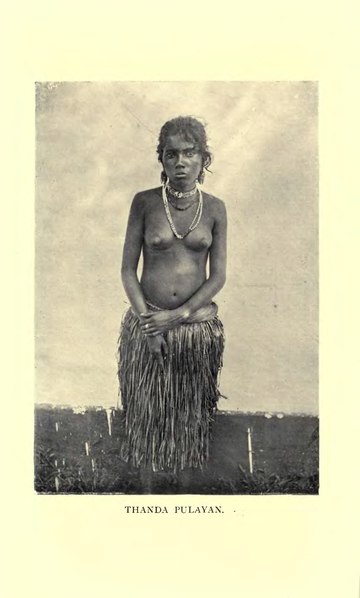
Thanda Pulayan woman wearing sedge leaves
Thanda Pulayans like many other untouchable castes were destitute of upper-body covering. It was considered disrespectful for a person to cover their upper body in the presence of higher people in the caste hierarchy. In the book “A Voyage to the East Indies” published in 1772, Grose of East India Company mentions that a woman who lived in a European settlement for some time and conformed to the European fashion had continued the concealment of her breasts in presence of the Queen of Attinga. The queen who herself was bare-breasted, ordered the woman’s breasts to be cut off for daring to appear before her with such a mark of disrespect to the established manners of the country.
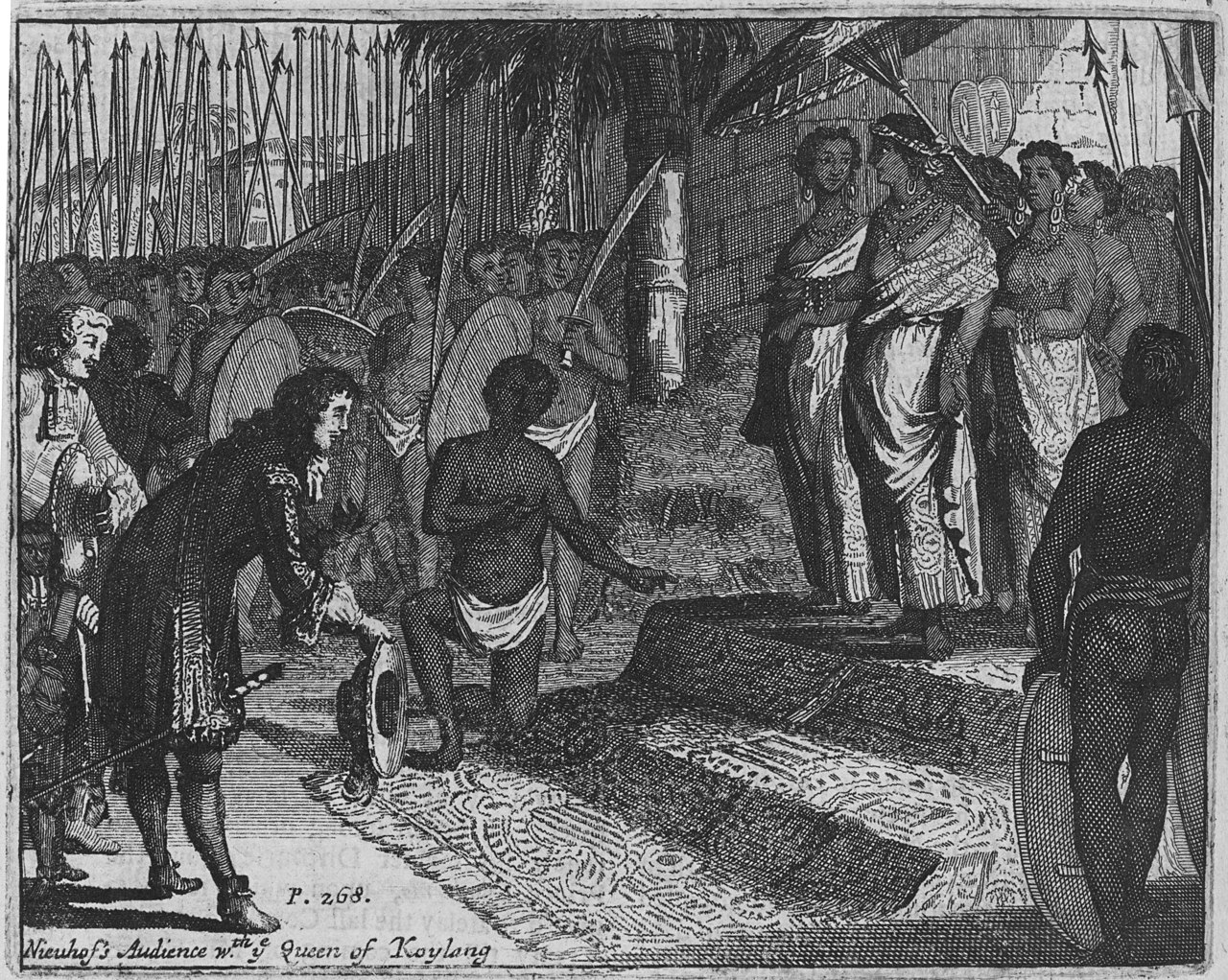
Nieuhof’s audience with the “Queen of Koylang” (1662).
Indian people left their upper body bare for most of their clothing history; however, this practice changed after the influx of Islamic and European clothing ideals. The aristocrats, wealthy merchants, and bureaucrats who directly worked under Europeans were the earliest to adopt Western clothing and fashion trends. By the 19th century, the practice of covering the upper body became a status symbol among the dominant castes in the Kingdom of Travancore and women of backward & untouchable castes were prohibited from covering their upper body in public. Only Brahmin men & women who enjoyed the supreme status in the varna hierarchy were allowed to cover their upper body at all times. Even women of other dominant castes like Nair who covered their upper body had to keep their breasts bare in presence of Brahmins. The Brahminical kingdom of Travancore imposed Mulakkaram/breast tax on the women of Nadar, Ezhavar and other marginalised castes if they covered their breasts. Nangeli, an Ezhava woman who lived in the early 19th century in the princely state of Travancore protested the caste-based breast tax by cutting off her breasts. Today, the village Nangeli comes from is called Mulachhipuram or the land of the woman with breasts, honouring Nangeli’s protest and sacrifice.
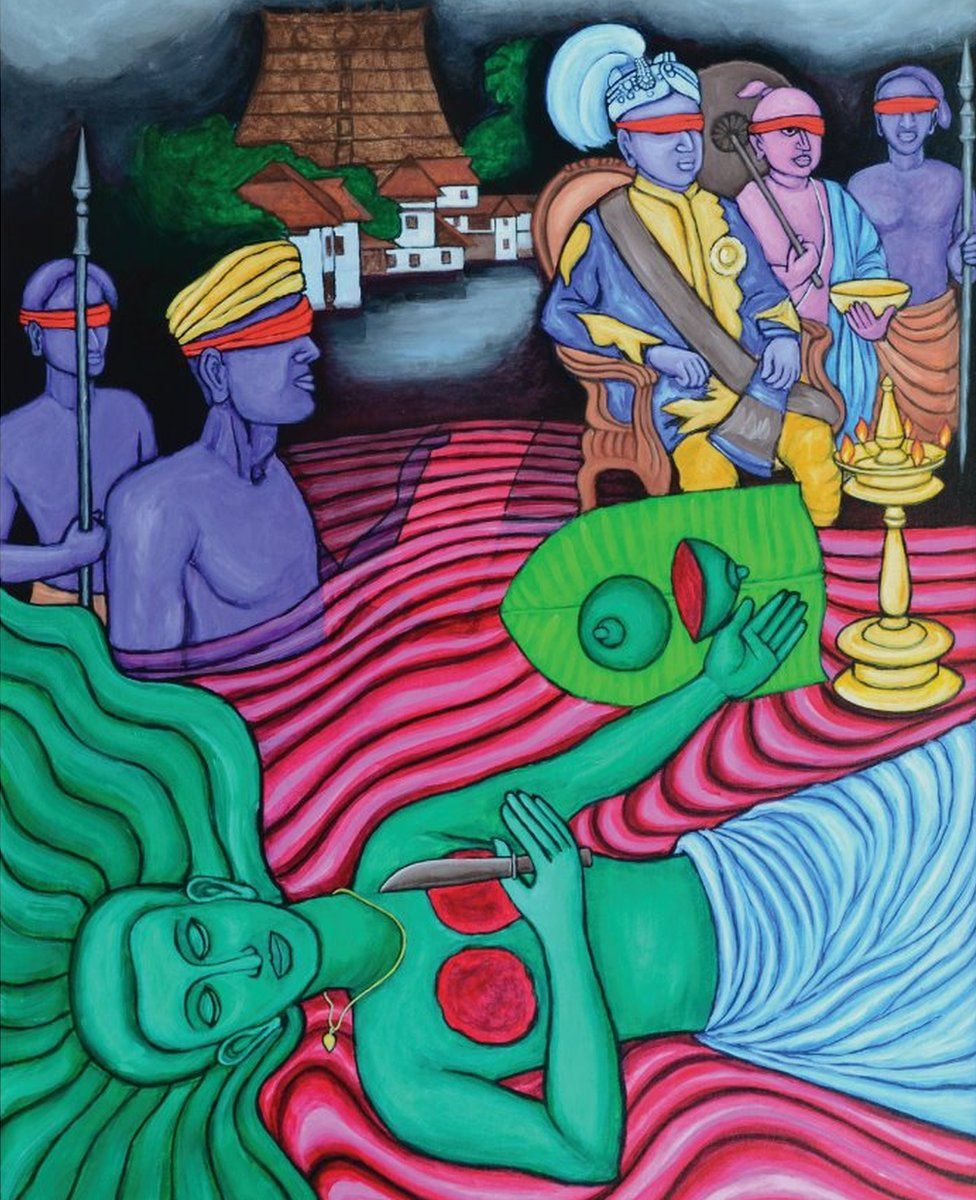
Artist Murali T’s painting depicts Nangeli’s protest & sacrifice.
A series of resistance movements from 1813 to 1859 known as the Channar Revolt was led by Nadar women for their right to cover the upper body. In 1813, Christian Nadar women successfully campaigned for their right to cover their breasts with the kuppayam, a type of long-sleeved blouse worn by Syrian Christians and Mappila Muslims. Nadar women were still forbidden to wear garments resembling the styles worn by Nair or Namboothiri women. Violence against Nadar women continued to prevail for exercising their right to cover the torso.
“some converted Christian women were stripped of even the undergarments and were forced to parade in the public. Numberless instances of molesting, houses set on fire, and physical attacks worsened the living conditions of the converted Christians” (Rajan 2020: 25).
The Channar revolt turned violent in 1859 when Travancore officials tied two Nadar women with rope and hung them from a tree in public for covering their breasts. Following violent protests, the king issued a proclamation allowing Nadar women to cover their upper body in styles that doesn’t resemble the clothing worn by women of dominant castes.
The Brahminical kingdom of Travancore imposed various taxes specific to clothing and appearance, particularly on the marginalised communities. Meesha kazhcha was a cess levied on the backward and Dalit castes for growing moustaches. Meniponnu was a tax imposed upon the Ezhava & Vannar communities for wearing golden ornaments. Kodapirathi bore similarities to Meniponnu where individuals lower in the caste hierarchy had to pay taxes for wearing silver ornaments. Women of Pulayar castes wore Kallumala – a chain of stone beads made of carved granite that symbolised their caste status. Perinad Mutiny or Kallumala Samaram (stone necklace protest) that took place on 24 October 1915 was a massive social agitation led by the Pulayar community for their right to dress with dignity and break free from the chains of caste markers. The protest was amplified by Mahatma Ayyankali who held a historical meeting in Kollam and called upon Pulayar women to wear blouses and give up the kallumala which symbolised their slavery. Pulaya women cut & threw away the Kallumala to assert their right to cover the upper body and wear metal ornaments. The Breast Tax (Mulakkaram in Malayalam) prohibiting women of marginalised castes from covering their upper body continued to prevail in the Kingdom of Travancore until it was abolished in 1924.
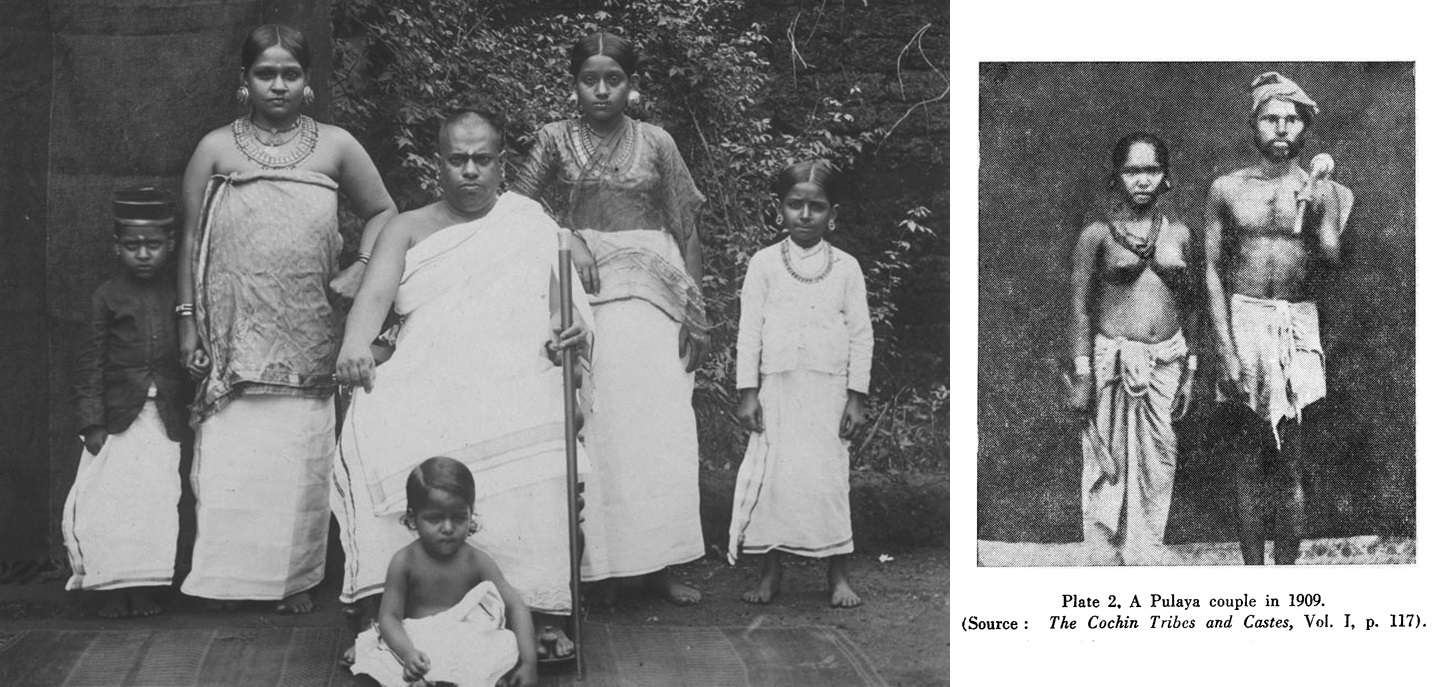
Sartorial inequality – (Left) Clothing of Brahmin family in Kerala, 1902 vs (right) clothing of Pulaya couple, 1909
In the revolutionary text “Annihilation of Caste” published in 1936, Dr BR Ambedkar cites several examples of the manifestation of caste through clothing and attire. Dr Ambedkar writes, “Under the rule of the Peshwas in the Maratha country, the untouchable was not allowed to use the public streets if a Hindu was coming along, lest he should pollute the Hindu by his shadow. The untouchable was required to have a black thread either on his wrist or around his neck, as a sign or a mark to prevent the Hindus from getting themselves polluted by his touch by mistake. In Poona, the capital of the Peshwa, the untouchable was required to carry, strung from his waist, a broom to sweep away from behind himself the dust he trod on, lest a Hindu walking on the same dust should be polluted. In Poona, the untouchable was required to carry an earthen pot hung around his neck wherever he went—for holding his spit, lest his spit falling on the earth should pollute a Hindu who might unknowingly happen to tread on it.” Babasaheb also mentions the tyranny practised by caste-Hindus upon the Balais, a Dalit community in central India. Dr Ambedkar comments, “Balais must not wear gold-lace-bordered pugrees. They must not wear dhotis with coloured or fancy borders. Balai women must not wear gold or silver ornaments; they must not wear fancy gowns or jackets. If the Balais do not agree to abide by these terms, they must clear out of the villages.” In the same essay, Babasaheb mentions another instance where the Sonars wore dhotis with folds and used the word namaskar for salutation. Dr Ambedkar states that “Both the folded way of wearing the “dhoti” and the namaskar were special to the Brahmins. The Brahmins did not like this imitation and this attempt by Sonars to pass off as Brahmins. Under the authority of the Peshwas, the Brahmins successfully put down this attempt on the part of the Sonars to adopt the ways of the Brahmins. They even got the President of the Councils of the East India Company’s settlement in Bombay to issue a prohibitory order against the Sonars residing in Bombay.”
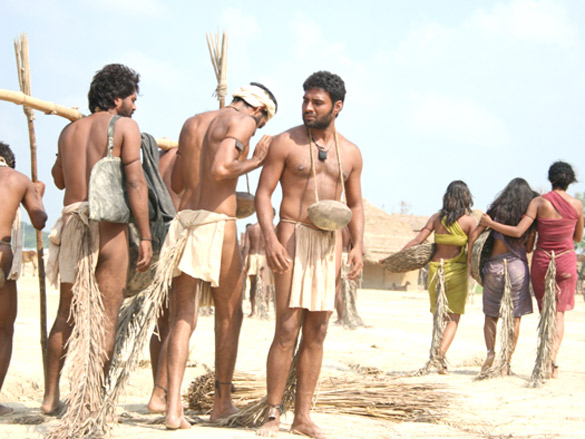
A still from the movie Shudra – The Rising, depicts the clothing of untouchables in Poona. In the Peshwe capital of Poona, the outcastes/avarnas were required to tie a broom to their waist and carry an earthen pot hung from their neck.
In Tamil Nadu, Periyar EV Ramasamy and members of Dravidar Kazhagam infamously wore black shirts to protest Brahminical hegemony and the superstitions prevalent in Thamizh society. According to ancient Sanskrit literature, the colour white represents “sattva” or purity whereas black is related to “tamas” denoting qualities like ignorance, dullness, and greed. Several verses of Rig Veda identifies white as the colour of Arya whereas black is associated with Dasas and Dasyus – the antithesis of Arya. According to Mahabharata, sage Bhrigu codified varnas in form of colours where Brahmin was white, Kshatriya was red, Vaishya was yellow, and the Shudra was black. In visual arts of the modern era, asuras are almost always depicted through black or dark skin. The colour black evolved to be associated with various superstitions and was widely considered inauspicious in Tamil Nadu. In 1946, Thanthai Periyar called for his party members to wear black shirts which became a ubiquitous style statement of the Dravidian self-respect movement.
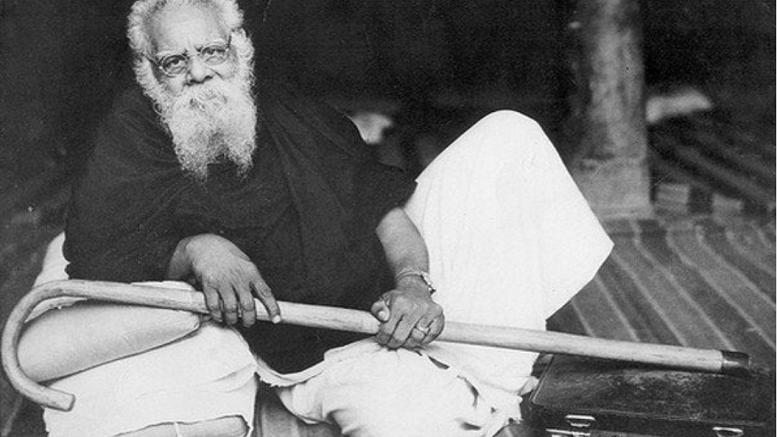
Thanthai Periyar dressed in a black shirt & shawl
Periyar and members of Dravidar Kazhagam also used thundu as a symbol to fight casteism. Thundu, a towel worn by men on shoulders was characterised by caste-specific rules. It wasn’t acceptable for backward castes and outcastes to wear thundu on their shoulders in presence of people of dominant castes. They had to either tie the thundu on the waist or tuck it under the armpits. In contrast, Brahmins and aristocrats covered their shoulders with angavasthram –a silk or cotton shawl featuring ornamental borders made of zari or brocade. In the 1940s, Periyar attended an event where a group of musicians were performing. The artist playing Nadhaswaram was using a towel to wipe his sweaty forehead. After some time, he got tired of constantly picking up the towel and placed it on his shoulder for the sake of convenience. In those days, Nadhaswaram artists who were lower in the caste hierarchy were prohibited from wearing even shirts and had to perform bare-chested in public. The dominant caste patron of the event was outraged by the nadhaswaram artist’s act of placing the towel on the shoulder and ordering them to remove it immediately. Periyar condemned the incident and thereafter wore thundu as a protest against the manifestation of caste in clothing.
Read: Caste & Class Politics of Ponnadai/Thundu
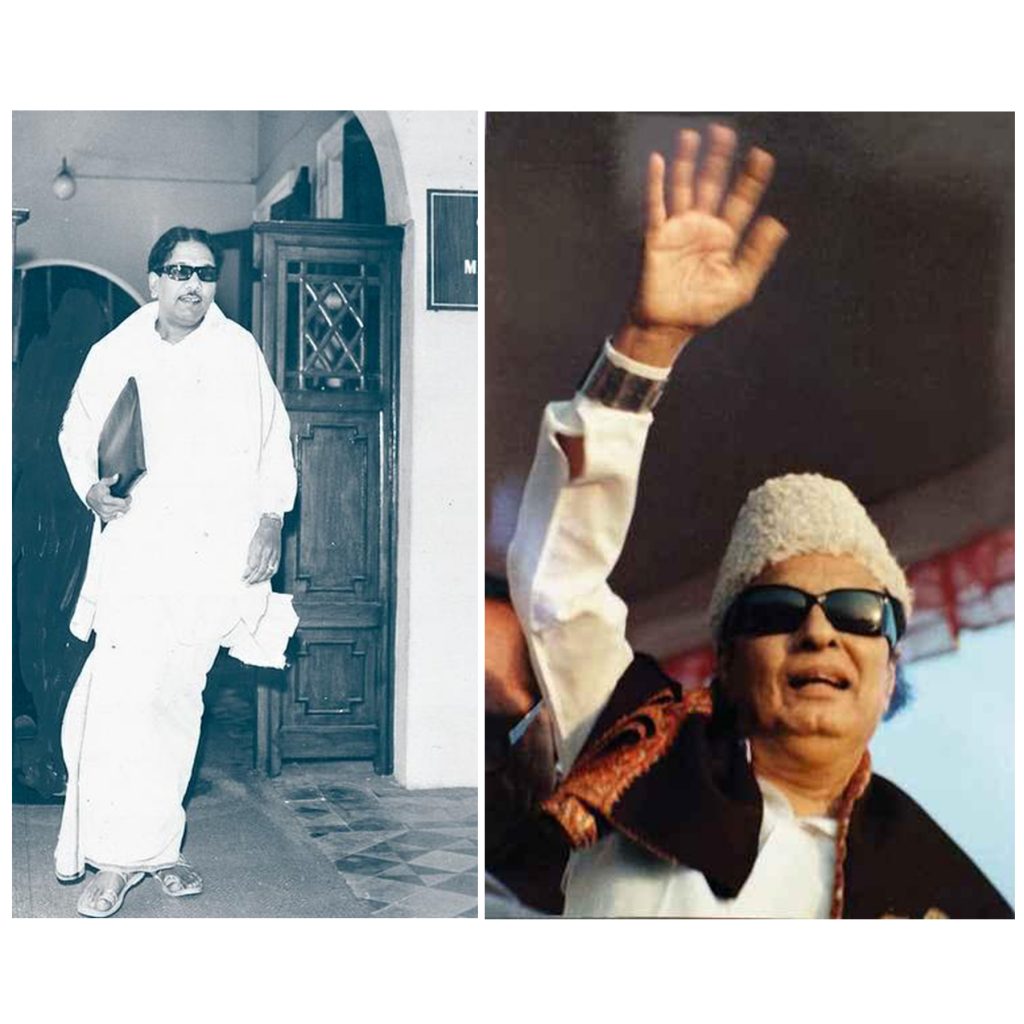
Kalaignar Karunanidhi (left) & MGR (right) wearing “thundu” – The Dravidian political iconography of protest against casteism & elitism. Image: Frontline & Outlook
Thanthai Periyar who devoted his life to the principles of rationalism, self-respect, women’s rights, and eradication of caste, also condemned the wedding ritual of tying thaali/mangalsutra which he correlated with casteism and patriarchy. To date, the thaali remains a popularly worn caste-marker designed exclusively according to one’s caste identity.
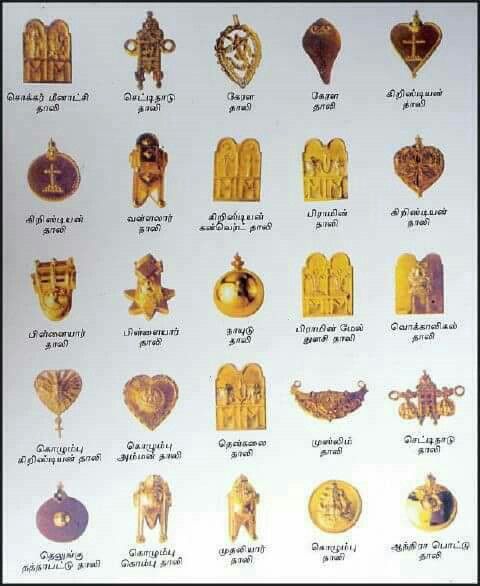
Casually wearing casteism – Thaali/Mangalsutra is designed according to one’s caste identity.
In the 21st century, white vetti-sattai has garnered the status of the respectable formal traditional attire of Thamizh men. The ankle-length white vetti itself isn’t prominent in the sculptures and fresco paintings of medieval Chozhas. However, white vetti featuring decorative borders worn in panchakachcham & mulakachcham style mark their arrival in Chozha murals which were restored by Telugu Nayaka rulers in the 16-17th century. Brahmins in Nayaka society wore panchakachcham dhoti where 18-feet fabric is draped around the waist with pleats in front and then the front pleats are passed in between the legs and tucked at back. Mulakachcham was a more simplified style of draping panchakachcham and was worn by Brahmins as well as other dominant non-Brahmin castes. Some Shudras who wore mulakachcham for wedding ceremonies called it kilpachchi. People lower in caste hierarchy wore vetti which was a rather short cloth simply tied around their waists in a tube-silhouette without passing it between the legs. A similar tubular waist-wrap lower garment known as mundu was also worn by people in Kerala, but the Namboothiri Brahmins & Nairs distinguished their mundu from that of oppressed castes with ornamental stripes on the border. During the colonial era, zamindars and bureaucrats who worked under the British combined ankle-length white dhotis and vettis with British clothing like blazers, jackets, and long coats. The ankle-length white vetti which symbolised the fashion of dominant castes over the years emerged as the honourable attire of Thamizh man in 80-90s Kollywood films which also propagated caste pride and supremacy. Thalaivar Rajinikanth wore pristine vetti-sattai in the film Yejaman where he played a village chieftain. Action hero Vijaykanth infamously wore white vetti-sattai in Chinna Gounder where he played a village landlord. Actor Sarathkumar donned the white vetti for the role of a village chief in the film Nattamai. Sarathkumar also sported the vetti-sattai look for the character Sakthivel Gounder in Suryavamsam. In the film, Thevar Magan, a London-educated Sakthivel played by Kamal Haasan, goes on to trade his western shirts and trousers for white vetti-sattai when he inherits his father’s role as the village chieftain. In the Mani Ratnam film Nayakan, actor Kamal Haasan sports the head-to-toe white vetti-sattai look for the character Velu Naicker, the vigilante gangster from Dharavi.
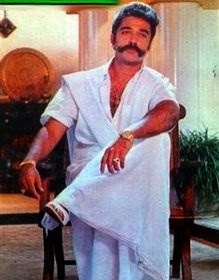
Actor Kamal Haasan wearing white vetti in the caste-pride themed film – Thevar Magan.
Unlike the white vetti, the checked lungi is subjected to taboo and stigma in several Thamizh movies despite the style having wider global recognition and trade history. In Thamizh films, lungis are often reduced to untidy costumes of goons or TASMAC dance sequences, thereby creating a stereotypical on-screen image for the garment.
Read: Lungi vs Vetti – Caste & Class Prejudice in the Clothing of Thamizh Cinema
In India, many movie halls, hotels, restaurants, and other elite spaces forbid wearing lungis. Lungi is unwelcomed in many temples across Tamil Nadu. In 2018, a local court in the Kishanganj district in Bihar issued a notice banning lungis on the court premises. The order was later overturned following public fury. In 2019, under the amended Motor Vehicles Act, the Uttar Pradesh government imposed a fine of Rs 2,000 if truck drivers & their helpers were found wearing lungis.

Image: Firstpost

A movie hall at Chennai forbidding lungi. Image: Ilyas Muhammed Raffiudeen
The checked lungi is as much of a swadeshi iconography as khadi is. Yet, wearing the lungi is frequently subjected to intolerance and prejudice. The politics of swadeshi is characterised by the very desi spirit of varnashrama. When MK Gandhi traded his western attire for the loincloth, it was about a twice-born man benefitting from caste & class-based discrimination rather than opposing it. The loincloth is a symbol of oppression that outcastes were forced into, whereas for Gandhi, it was a choice entitled by caste & class privilege. The loincloth was neither a choice nor an aspiration for people oppressed by caste – it simply did not provide any upward mobility for the outcastes. At its worst, Gandhi’s loincloth was an appropriation of poverty and misery that reduced historical oppression into a style statement. Subjugation faced by India’s marginalised castes wasn’t merely videshi, it was swadeshi too – it was brahminical.
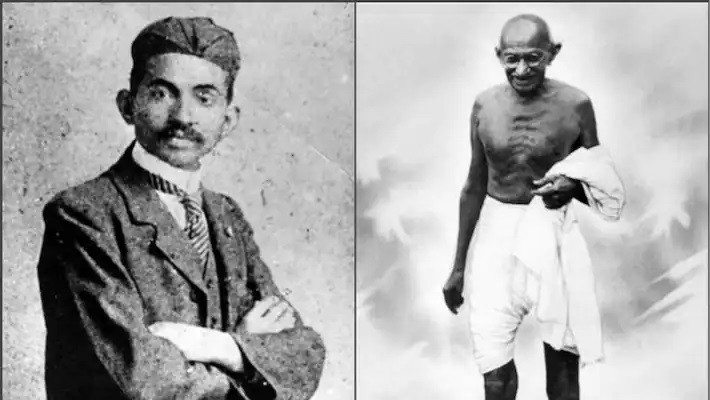
MK Gandhi who was born into caste & class privilege goes on to appropriate poverty and reduce the misery of India’s marginalised people into a political style statement
Unlike Gandhi, Dr BR Ambedkar found his sartorial inspiration outside the varnashrama society. Dr Ambedkar’s blue three-piece suit not only symbolised progress and prosperity but liberation from the swadeshi system of caste. His revolutionary style statement challenged the historical norms of what a Dalit could or could not wear. The blue three-piece suit symbolised a movement away from archaic traditions toward modern casteless society.
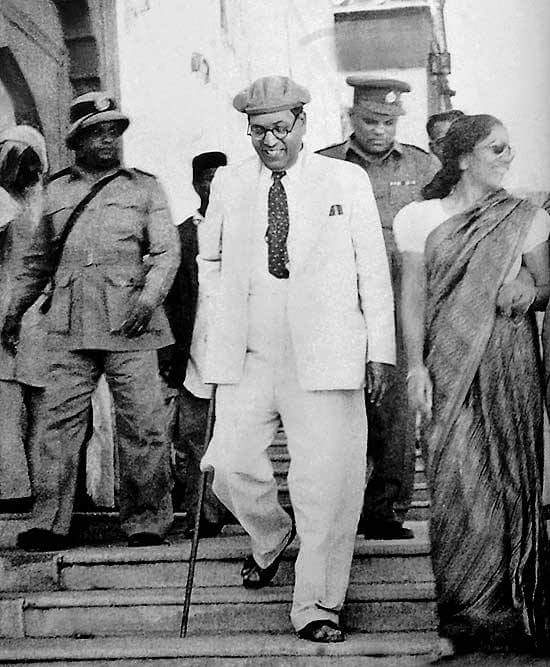
Dr Ambedkar dressed in coat-suit
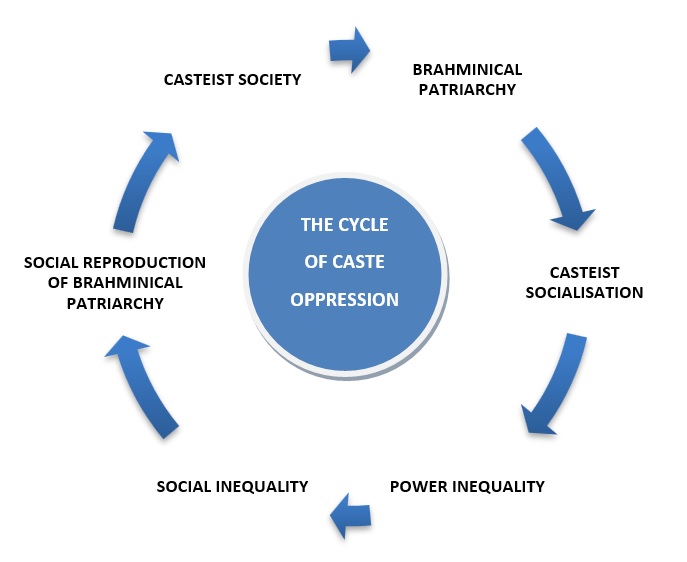
The cycle of caste oppression
Alex Scott-Samuel, a lecturer in public health at the University of Liverpool, UK stated that social inequalities like gender oppression are produced and sustained through gendered socialisation and norms. Casteism is produced, reproduced, and perpetuated in a similar cyclic pattern. In a casteist society, prevalent norms of brahminical patriarchy result in casteist socialisation which contributes to power inequalities leading to social inequalities which socially reproduces brahminical patriarchy. The chain of oppression is no stronger than its weakest link. Casteist socialisation is the weak-link binding the chains of caste oppression. Caste markers are very casually but deeply embedded in our everyday clothing and other socialisation norms. It is imperative to do away with all forms of casteist socialisation for the annihilation of caste.
Educate, agitate, and organise. – Dr B R Ambedkar
Read: Caste, Clothing, and The Bias Cut
Disclaimer: All of the above images are sourced from WikiCommons unless mentioned otherwise.



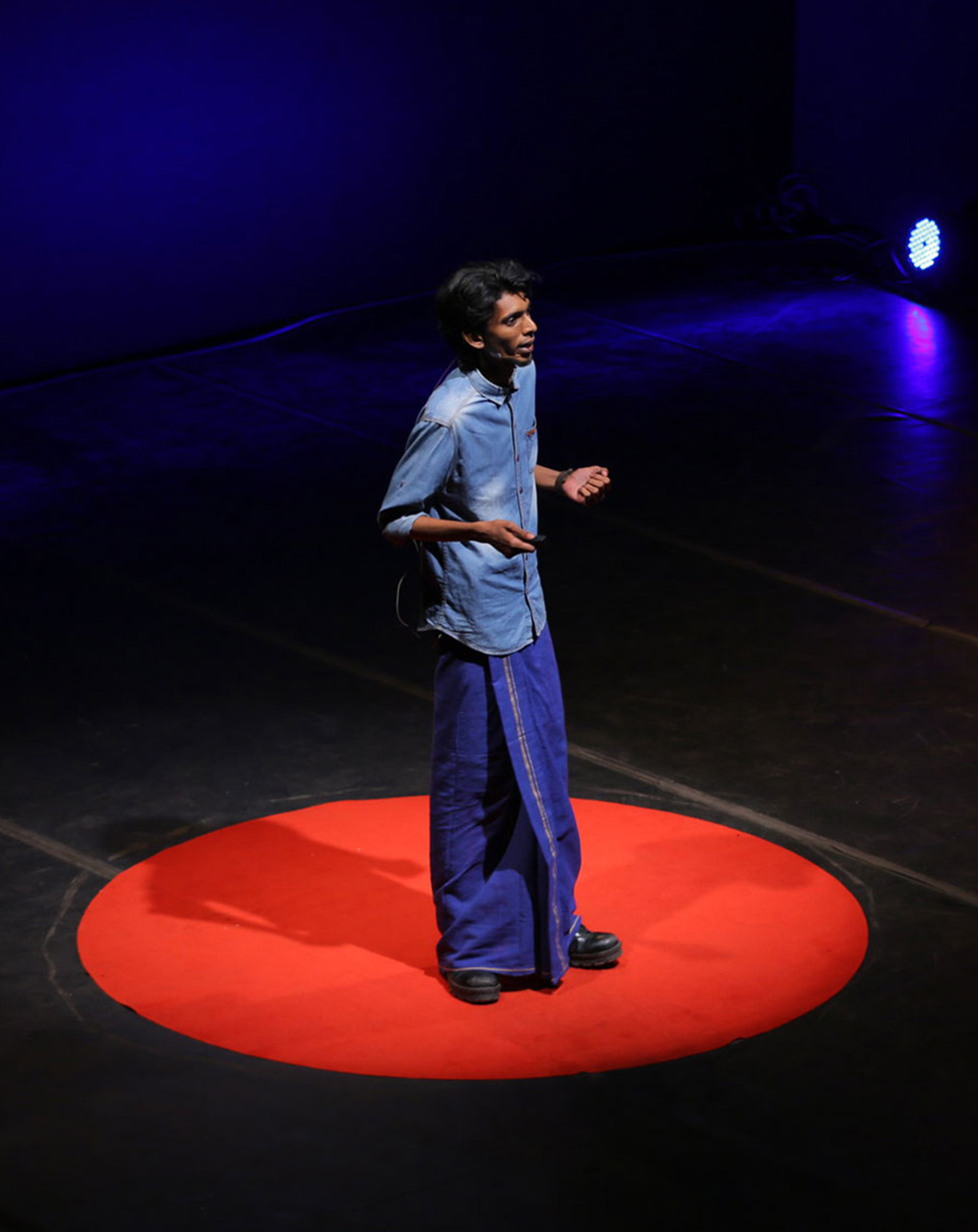
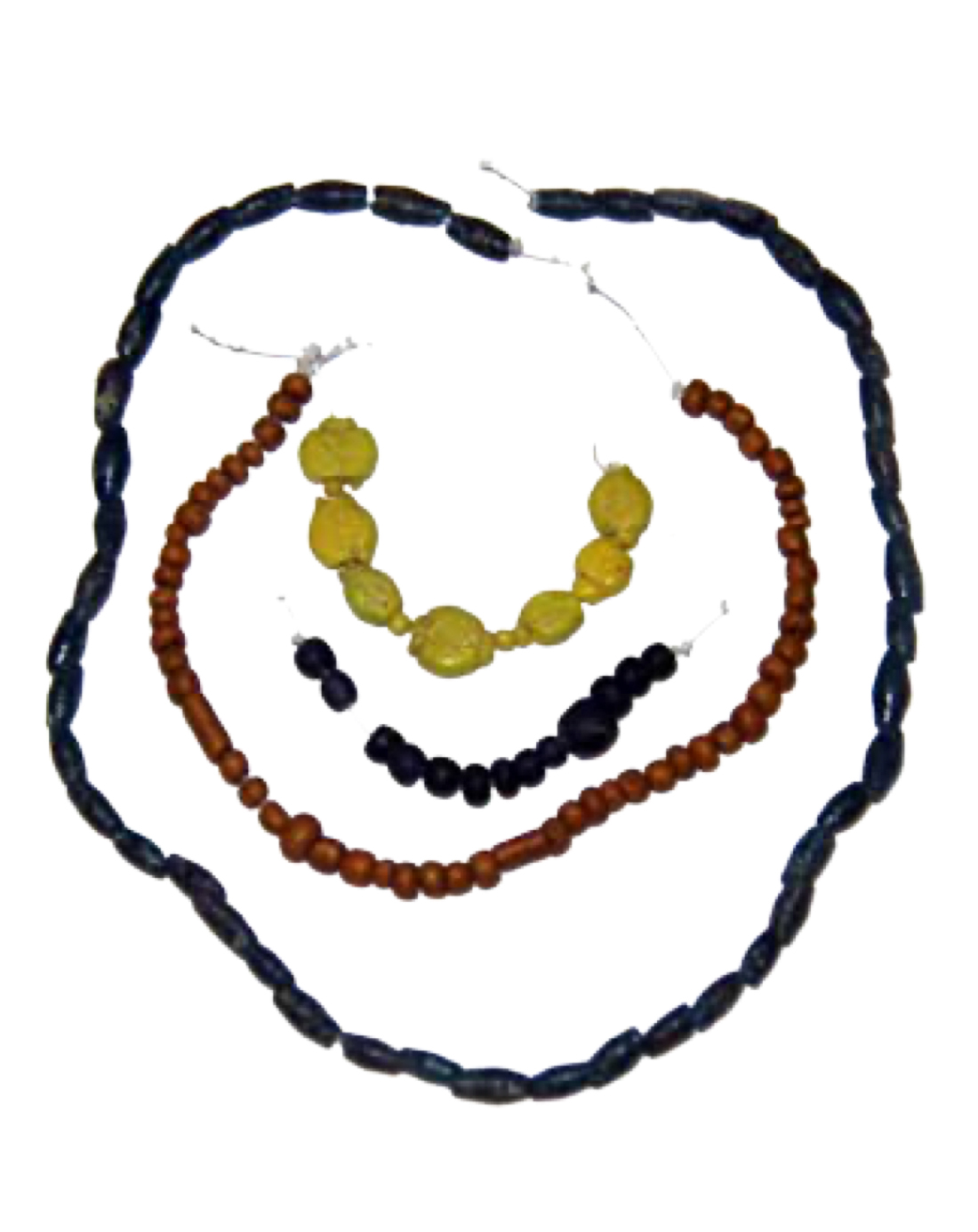
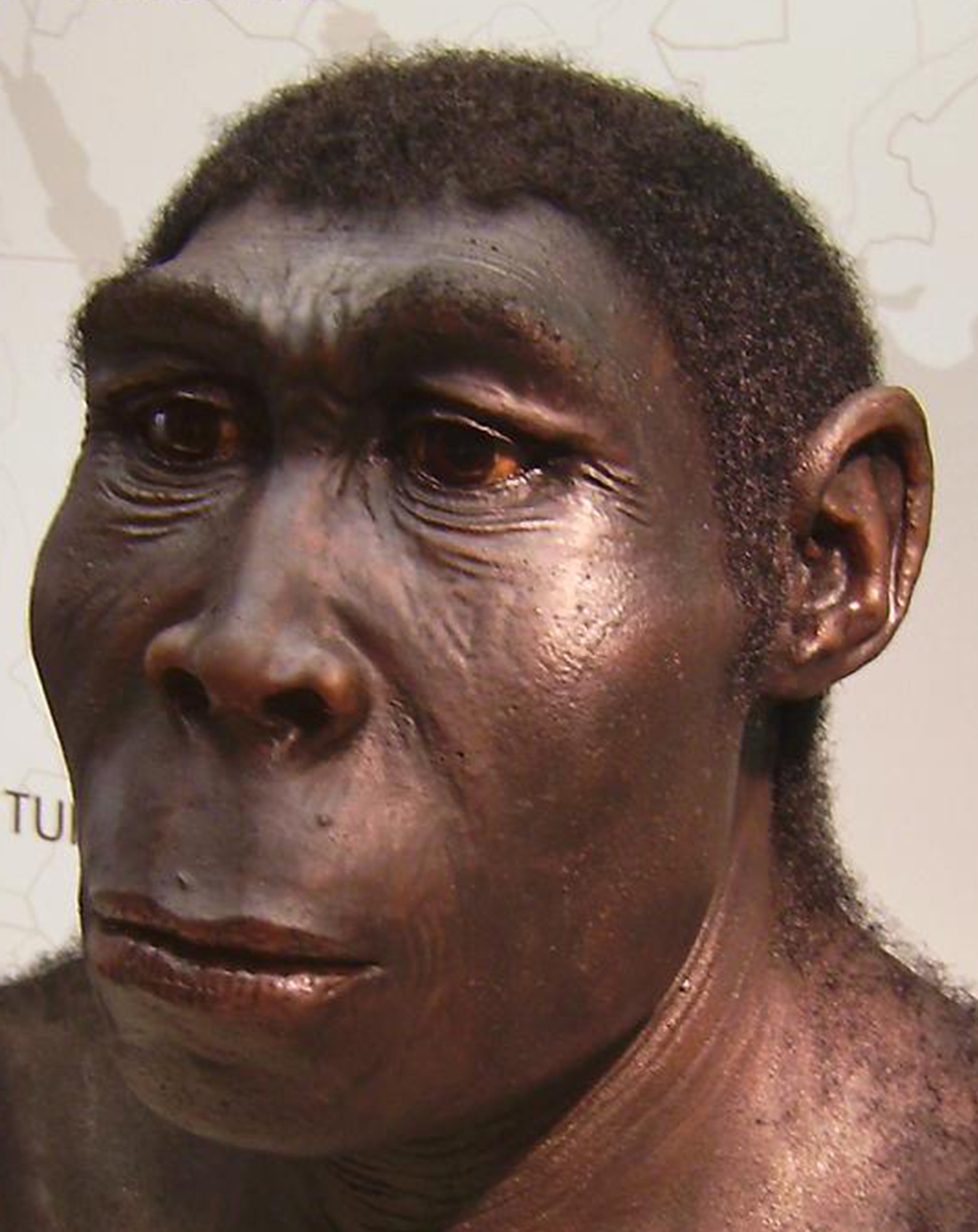
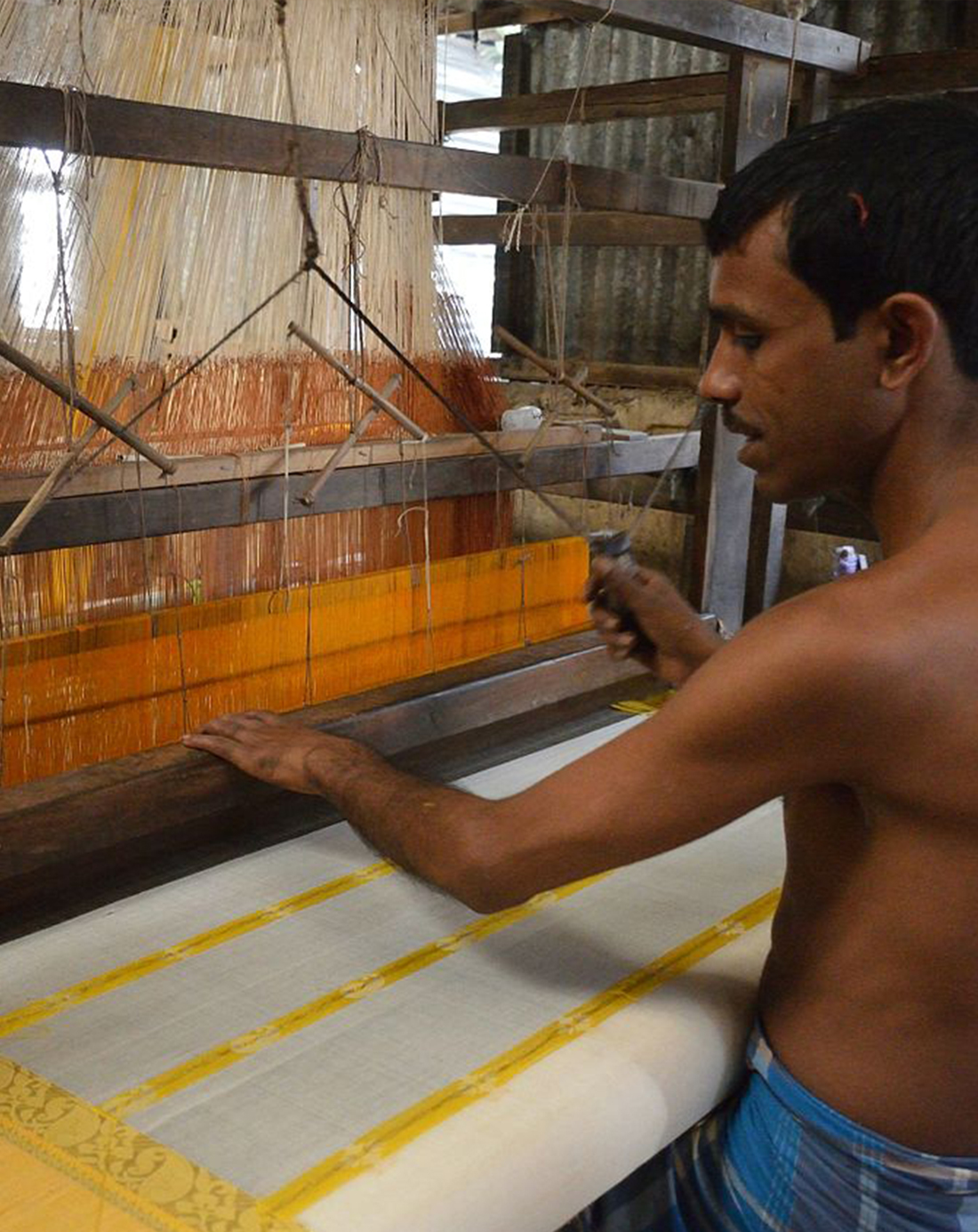
Trevor Bridges
Very good read. It’s interesting to see how we are influenced in different ways throughout history. Thank you for posting.
Arthur
Quite an informative article!
pemal
Thank you for this very comprehensive and interesting article. I will definitely take a look at this. Extremely useful info I care for such info much.
Monressokid
Thank you for your informative article !